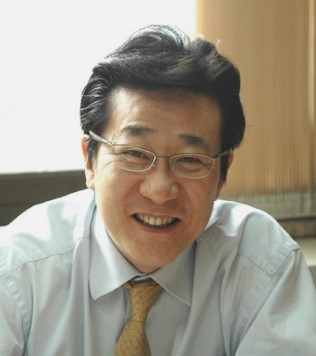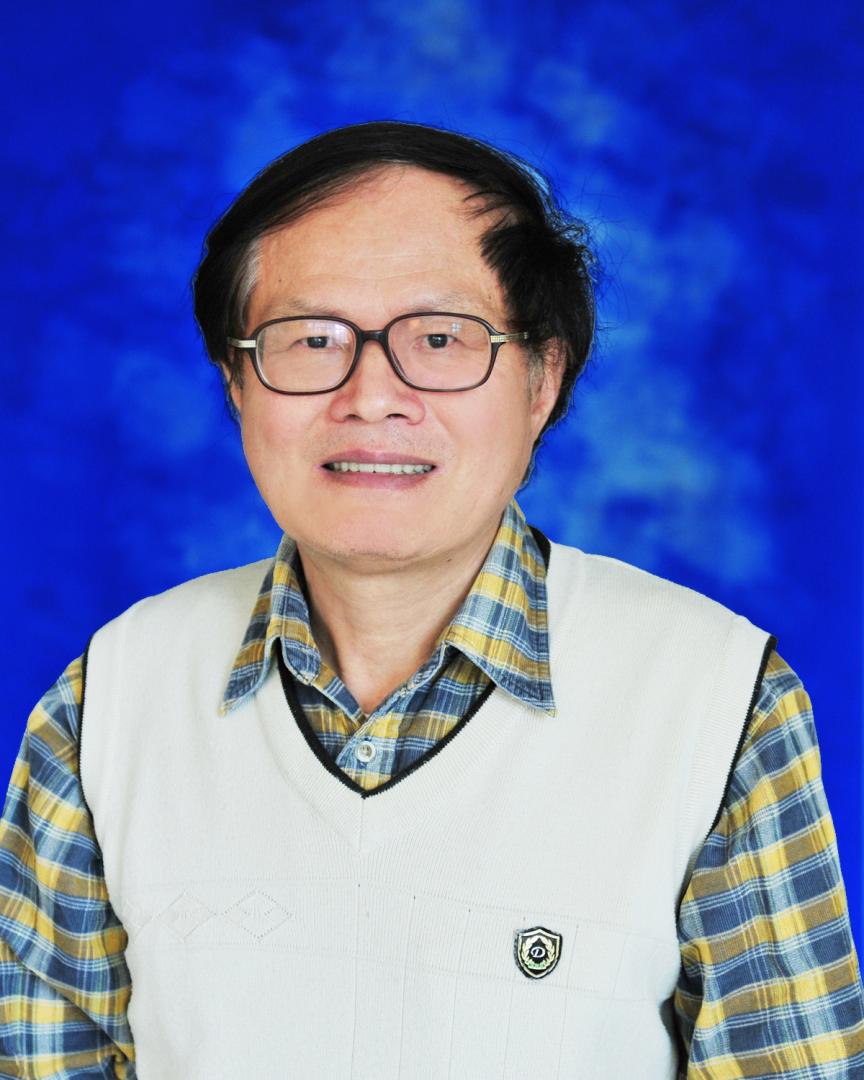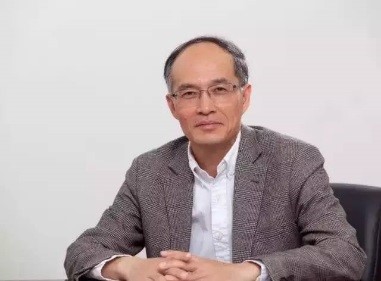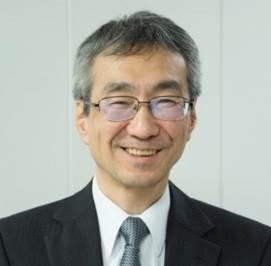| Ion Control in MEMS Traps for Quantum Information 9:20-10:30, Nov. 5. |
|
Abstract Quantum information processing is a novel information processing method which encodes information into a quantum system instead of conventional digital electronics. By utilizing unique characteristics in the quantum regime, including superposition, entanglement, and teleportation, the quantum technology can be a disruptive technology in information processing. To build physical quantum platforms, a number of approaches are being developed. Among these, ion traps are considered as a promising architecture, because of the long coherence time, ideal isolation from the surroundings, and the capability of individual qubit manipulations. In this talk, world-wide research and development efforts on the topic are briefly introduced. And then MEMS-fabricated ion trap technology and physical control of ions, including basic principles of ion traps, MEMS-based approaches for constructing ion trap systems, and design optimization for junction ion traps and controlling ions are presented. Biography 
Dong-Il “Dan” Cho received the B.S.M.E. degree from Carnegie-Mellon University, Pittsburg, PA, and the M.S and Ph.D. degrees from the Massachusetts Institute of Technology, Cambridge. From 1987 to 1993, he was an Assistant Professor at Princeton University, Princeton, NJ. Since 1993, he has been a Professor in the Department of Electrical and Computer Engineering at Seoul National University, Seoul, Korea. He is the author/coauthor of more than 120 international journal articles. He is the holder/coholder of 29 US patents and 82 Korean patents. He has served on the editorial board of many international journals. Currently, he is Senior Editor of the IEEE Journal of MEMS and IFAC Mechatronics. He was the President of ICROS and BOG Member of IEEE CSS, and is currently Vice President of IFAC, Chair of the Technical Board of IFAC, and AdCom Member of IEEE EDS. He is an elected Senior Member of National Academy of Engineering of Korea.
|
| Multiobjective H2/H∞ Control Design of the Nonlinear Mean-Field Stochastic Jump-Diffusion Systems via Fuzzy Approach 10:55-12:10, Nov. 5. |
|
Abstract The mean-field theory was proposed to describe collective behaviors resulting from individuals’ mutual interactions in various physical and sociological dynamic systems. For example, in the stock market, if one wants to invest one stock, he not only considers the price of the stock but also consider the index of the stock market (i.e. the mean of all stock market). Recently, the mean-field stochastic system has become an active research field in control field. However, at present, it is still very difficult to solve the control design of nonlinear mean field stochastic system. In this talk, the multiobjective H2/ H∞ fuzzy control design is investigated for nonlinear mean-field jump diffusion (MFSJD) systems for concurrently minimizing both the H2 and H∞ performance. Since H2 and H∞ performance are usually in conflict with each other, the optimization problem which concurrently minimizes H2 and H∞ performance can be regarded as a dynamically constrained multiobjective optimization problem (MOP). Because the Hamilton-Jacobi inequalities (HJIs) of the nonlinear MFSJD systems are difficult to derive, the multiobjective H2/ H∞ control design problems of nonlinear MFSJD system are difficult to solve. The Takagi-Sugeno (T-S) fuzzy interpolation scheme and an indirect method are introduced to help us transform the dynamically constrained MOP into a linear matrix inequalities (LMIs) constrained MOP. Thus, one can accomplish the multiobjective H2/ H∞ fuzzy control design via the LMI-constrained multiobjective evolutionary algorithms (MOEA). To efficiently solve the multiobjective H2/ H∞ control design problem, we proposed a novel LMI-constrained MOEA called fronts-squeezing. The fronts-squeezing LMI-constrained MOEA can concurrently search the Pareto front from both sides of feasible and infeasible region and narrow the search region down to increase its efficiency. Finally, we present a simulation example about the multiobjective regulation of nonlinear MFSJD financial system to illustrate the design procedure and verify the proposed theories. Biography 
Bor-Sen Chen received BS in electrical engineering from Tatung Institute of Technology in 1970, MS in geophysics from National Central University in 1973 and the Ph.D. degree in electrical engineering from the University of Southern California, Los Angeles in 1982. He is currently the Honorary Tsing Hua Chair Professor of Electrical Engineering at National Tsing Hua University, Hsinchu, Taiwan. He had been a lecturer, associate professor at Tatung Institute of Technology from 1973-1987. He had been the professor, chair professor and distinguished chair professor from 1987-2017. His current research interests are in control engineering, signal processing and systems biology. Prof. Chen have published about 300 journal papers, including 120 papers in control, 80 papers in signal processing and communication and 100 papers in systems and synthetic biology. Recently, he have also published 8 monographs in control, systems and synthetic biology. Prof. Chen has received the Distinguished Research Award from the National Science Council of Taiwan four times. He was awarded as National Chair Professor by the Ministry of Education Taiwan in 2011. He has also received the Automatic Control Medal from the Automatic Control Society of Taiwan in 2001. He is a Life Fellow of IEEE.
|
| Control 5.0: From Parallel Intelligence to Parallel Control 13:00-14:15, Nov. 6. |
|
Abstract: In the 1960s, artificial intelligence opened up new ways for humans to explore complex systems, and many intelligent methods emerged based on artificial intelligence technologies thereafter. In this talk, the origin of artificial intelligence is introduced, based on which the concepts of hybrid intelligence and parallel intelligence are presented. The paradigm shift in Intelligence indicates the “new normal” of cyber-social-physical systems (CPSS). Thus, the ACP-based parallel intelligence consisting of artificial societies, Computational experiments and Parallel execution are introduced to bridge the big modeling gap in CPSS. Considering the control problem of complex systems with both engineering and social complexities, parallel control is introduced and its advantages in solving complex optimization control problems are illustrated. Intelligent control is developed from learning control to computational intelligence control and then to parallel control. Parallel control, which becomes Control 5.0, is an effective method to realize the knowledge automation of complex systems. Biography 
Fei-Yue Wang received his Ph.D. in Computer and Systems Engineering from Rensselaer Polytechnic Institute, Troy, New York in 1990. He joined the University of Arizona in 1990 and became a Professor and Director of the Robotics and Automation Lab (RAL) and Program in Advanced Research for Complex Systems (PARCS). In 1999, he founded the Intelligent Control and Systems Engineering Center at the Institute of Automation, Chinese Academy of Sciences (CAS), Beijing, China, under the support of the Outstanding Overseas Chinese Talents Program from the State Planning Council and “100Talent Program” from CAS, and in 2002, was appointed as the Director of the Key Lab of Complex Systems and Intelligence Science, CAS. From 2006 to 2010, he was Vice President for Research, Education, and Academic Exchanges at the Institute of Automation, CAS. In 2011, he became the State Specially Appointed Expert and the Director of the State Key Laboratory for Management and Control of Complex Systems. Dr. Wang’s current research focuses on methods and applications for parallel systems, social computing, parallel intelligence, and knowledge automation. He was the Founding Editor-in-Chief of the International Journal of Intelligent Control and Systems (1995-2000), Founding EiC of IEEE ITS Magazine (2006-2007), EiC of IEEE Intelligent Systems (2009-2012), and IEEE Transactions on ITS (2009-2016), and Founding EiC of IEEE/CAA Journal of Automatica Sinica (2014-2017). Currently he is the EiC of IEEE Transactions on Computational Social Systems, and Chinese Journal of Command and Control. Since 1997, he has served as General or Program Chair of more than 20 IEEE, INFORMS, ACM, and ASME conferences. He was the President of IEEE ITS Society (2005-2007), Chinese Association for Science and Technology (CAST, USA) in 2005, the American Zhu Kezhen Education Foundation (2007-2008), and the Vice President of the ACM China Council (2010-2011). Currently, he is the President-Elect of IEEE Council on RFID. Since 2008, he has been the Vice President and Secretary General of Chinese Association of Automation. Dr. Wang has been elected as Fellow of IEEE, INCOSE, IFAC, ASME, and AAAS. In 2007, he received the National Prize in Natural Sciences of China and was awarded the Outstanding Scientist by ACM for his research contributions in intelligent control and social computing. He received IEEE ITS Outstanding Application and Research Awards in 2009, 2011 and 2015, and IEEE SMC Norbert Wiener Award in 2014.
|
| Bioinspired robotics and its application to rescue and recovery 14:35-15:50, Nov. 6. |
|
Abstract: Our laboratory has been engaged in two broad and connected areas of research that relate to human surroundings: bio-inspired robotics and rescue robotic. Living creatures have survived and been optimized by natural selection. An understanding of the functions of living things is very useful in creating new artificial robots. In our lab, we are interested in analyzing the beautiful skills and behaviors of living things, and we are trying to find solutions to the following questions, among others: Why can living snakes move without legs? Why do quadrupeds change their gait patterns (for example, walk, trot, gallop) depending on their speed of movement? What is the mechanism of the flocking behaviors of birds and fish? How can small ants build a big anthill? Why can human beings walk with two legs? Based on our understanding of these phenomena, we can apply our knowledge to create robots to solve industrial problems. We believe that rescue robot systems are another important application of robotic technology. During my time as an employee at Kobe University, one of my masters student, Mr. Motohiro Kisoi, was killed in the Great Hanshin-Awaji Earthquake on January 17, 1995. Since this tragic event, I have been putting my heart into the development of useful rescue robot systems and rescue engineering. When the Great East Japan Earthquake occurred in 2011, we dispatched and utilized the rescue robots KOHGA3 to inspect damaged buildings in Hachinohe and Aomori, and we dispatched underwater robots to search for bodies in Minamisanriku, Miyagi, and Rikuzentakata in Iwate. My dream is to establish an international rescue robot team, like the popular TV show Thunderbirds, using advanced robotic technologies. If we can dispatch rescue robots from Japan to disaster sites everywhere in the world for disaster response and recovery, it will be a strong contribution to the world. Biography 
Fumitoshi Matsuno received the Dr. Eng. degree from Osaka University in 1986. In 1986 he joined the Department of Control Engineering, Osaka University. He became a Lecturer in 1991 and an Associate Professor in 1992, in the Department of Systems Engineering, Kobe University. In 1996 he joined the Department of Computational Intelligence and Systems Science, Interdisciplinary Graduate School of Science and Engineering, Tokyo Institute of Technology as an Associate Professor. In 2003 he became a Professor in the Department of Mechanical Engineering and Intelligent Systems, University of Electro-Communications, Tokyo. Since 2009, he has been a Professor in the Department of Mechanical Engineering and Science, Kyoto University. He holds also posts of the President of the Institute of Systems, Control and Information Engineers (ISCIE) and the Vice-President of NPO International Rescue System Institute (IRS). His current research interestslie in robotics, swarm intelligence, control of distributed parameter system and nonlinear system, and rescue support system in disaster. Dr. Matsuno received many awards including the Outstanding Paper Award in 2001, 2006 and 2017, Takeda Memorial Prize and Tomoda Memorial Prize in 2001 and 2017 from the Society of Instrument and Control Engineers (SICE), the Prize for Academic Achievement from Japan Society of Mechanical Engineers (JSME) in 2009, the Best Paper Award in 2013 from Information Processing Society of Japan, and the Best Paper Award in 2018 from the Robotics Society of Japan (RSJ). He is a Fellow member of the SICE, the JSME, the RSJ and a member of the IEEE among other organizations. He served as a co-chair of IEEE RAS Technical Committee on Safety, Security, and Rescue Robotics (SSRR), an Editor-in-Chief of Journal of RSJ, an Editor of Journal of Intelligent and Robotic Systems, a chair of Steering Committee of SICE Annual Conference, a General Chair of IEEE SSRR2011 and IEEE/SICE SII2011, SWARM2015 etc. He is an Editor of Journal of Robotics, International Journal of Control, Automation, and Systems, an Associate Editor of Advanced Robotics etc. and on the Conf. Editorial Board of IEEE CSS.
|